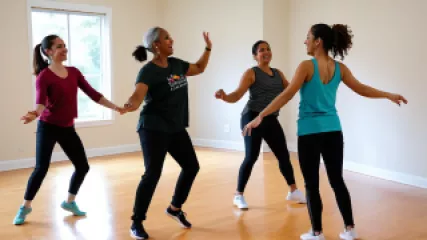Exploring the Transformative Power of Anxiety Therapy
for 1 år siden
Terapi Grundlæggende
Dance Movement Therapy: A Conversation with [Expert's Name]
for 1 år siden
Dansebevægelsesterapi
Why Confidence Building is Crucial for Personal Growth
for 1 år siden
Selvtillidsopbygning
Unlock Inner Strength: A Step-by-Step Guide to Therapy for Veterans
for 1 år siden
Terapi for Veteraner
My Journey with Dance Movement Therapy: Unlocking Emotional Well-being
for 1 år siden
Dansebevægelsesterapi
Creating a Successful Veterans Mental Wellness Program: A Step-by-Step Guide
for 1 år siden
Terapi for Veteraner
Mastering Confidence Building: The Ultimate Guide
for 1 år siden
Selvtillidsopbygning
How Can I Boost My Confidence in 5 Simple Steps?
for 1 år siden
Selvtillidsopbygning
Top 10 Self-Discipline Counseling Sessions to Transform Your Life
for 1 år siden
Selvdisciplin
What are the benefits of remote dance therapy?
for 1 år siden
Dansebevægelsesterapi
Exploring the Power of Dance Movement Therapy in Mental Health
for 1 år siden
Dansebevægelsesterapi
10 Powerful Positive Affirmations to Boost Personal Growth
for 1 år siden
Effekt af Positive Bekræftelser
Exploring the Mental Health Challenges of Diaspora Individuals: A Research Summary
for 1 år siden
Mental Sundhed i Diaspora
5 Steps to Access Therapy Services for Veterans
for 1 år siden
Terapi for Veteraner
Boost Your Confidence with Online Therapy for Self-Confidence
for 1 år siden
Selvtillidsopbygning


![Dance Movement Therapy: A Conversation with [Expert's Name]](https://therapeak.online/storage/4098/conversions/media-libraryfzcvrO-small.webp)












